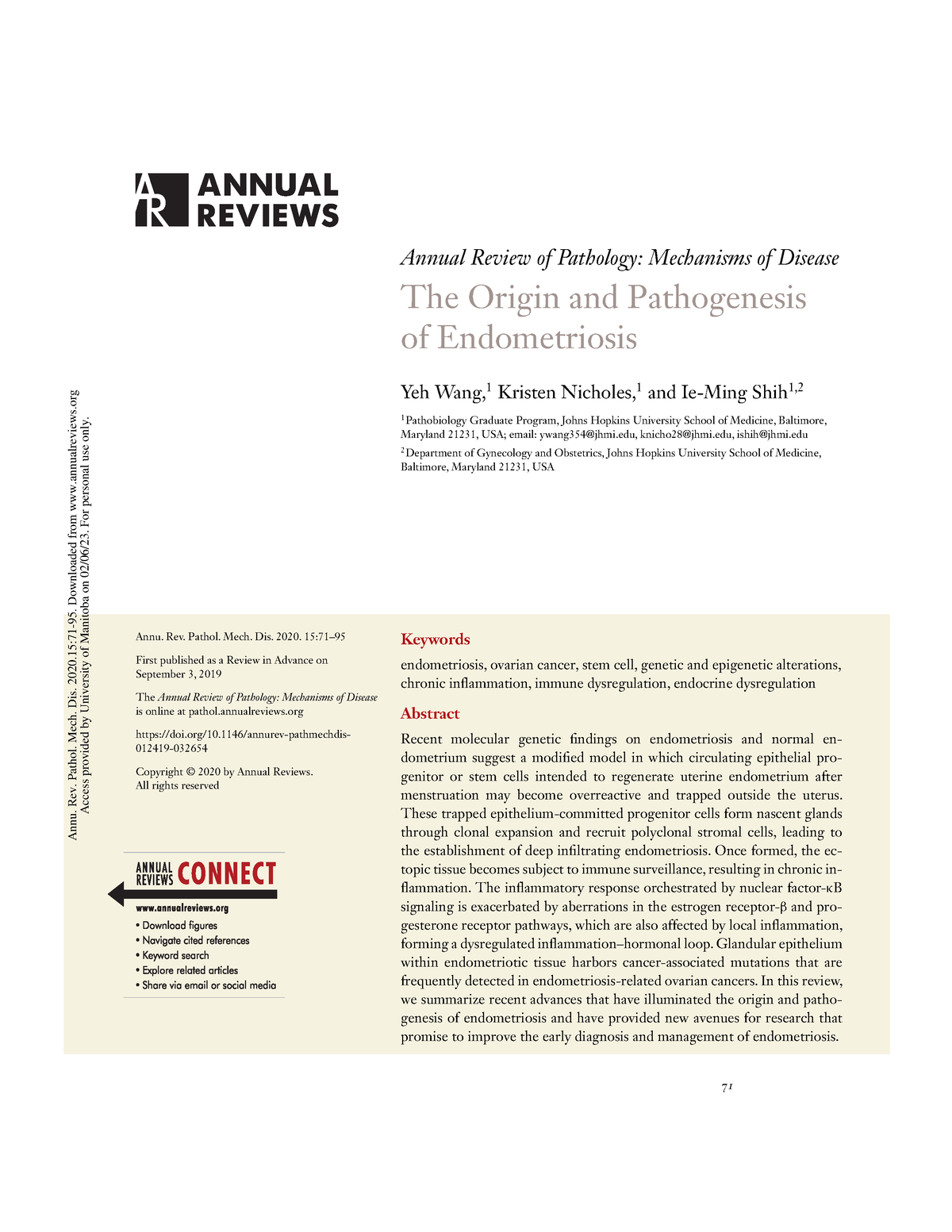免疫和无菌炎症中的DAMP、PAMP和LAMP。
IF 28.4
1区 医学
Q1 PATHOLOGY
Annual Review of Pathology-Mechanisms of Disease
Pub Date : 2020-01-24
DOI:10.1146/annurev-pathmechdis-012419-032847
引用次数: 350
摘要
认识到白细胞运输在炎症中的重要性导致了一些治疗突破。然而,许多炎症病理仍然没有特定的治疗方法。这篇综述讨论了无菌炎症中的白细胞,这是一个由无菌(非微生物)分子引起的过程,包括损伤相关分子模式(DAMP)。DAMP结合特异性受体来激活炎症,并启动中性粒细胞和单核细胞的高度优化的免疫细胞募集序列,以启动有效的组织修复。当DAMP被清除时,募集的白细胞从促炎程序变为修复程序,这是一种由不变的自然杀伤T细胞局部监督的转换。此外,中性粒细胞离开炎症部位并反向迁移回血液。当程序切换或反向迁移失败时,或者当协调的白细胞努力无法清除免疫刺激分子时,炎症会持续。后者会导致不适当的白细胞活化,这是许多与不良生活方式选择相关的病理的驱动因素。我们讨论了生活方式相关的炎症性疾病及其相应的免疫刺激性生活方式相关分子模式(LAMP),并将其与DAMP区分开来。《病理学年度评论:疾病机制》第15卷预计最终在线出版日期为2020年1月24日。请参阅http://www.annualreviews.org/page/journal/pubdates用于修订估算。本文章由计算机程序翻译,如有差异,请以英文原文为准。
DAMPs, PAMPs, and LAMPs in Immunity and Sterile Inflammation.
Recognizing the importance of leukocyte trafficking in inflammation led to some therapeutic breakthroughs. However, many inflammatory pathologies remain without specific therapy. This review discusses leukocytes in the context of sterile inflammation, a process caused by sterile (non-microbial) molecules, comprising damage-associated molecular patterns (DAMPs). DAMPs bind specific receptors to activate inflammation and start a highly optimized sequence of immune cell recruitment of neutrophils and monocytes to initiate effective tissue repair. When DAMPs are cleared, the recruited leukocytes change from a proinflammatory to a reparative program, a switch that is locally supervised by invariant natural killer T cells. In addition, neutrophils exit the inflammatory site and reverse transmigrate back to the bloodstream. Inflammation persists when the program switch or reverse transmigration fails, or when the coordinated leukocyte effort cannot clear the immunostimulatory molecules. The latter causes inappropriate leukocyte activation, a driver of many pathologies associated with poor lifestyle choices. We discuss lifestyle-associated inflammatory diseases and their corresponding immunostimulatory lifestyle-associated molecular patterns (LAMPs) and distinguish them from DAMPs. Expected final online publication date for the Annual Review of Pathology: Mechanisms of Disease, Volume 15 is January 24, 2020. Please see http://www.annualreviews.org/page/journal/pubdates for revised estimates.
求助全文
通过发布文献求助,成功后即可免费获取论文全文。
去求助
来源期刊
CiteScore
62.60
自引率
0.00%
发文量
40
期刊介绍:
The Annual Review of Pathology: Mechanisms of Disease is a scholarly journal that has been published since 2006. Its primary focus is to provide a comprehensive overview of recent advancements in our knowledge of the causes and development of significant human diseases. The journal places particular emphasis on exploring the current and evolving concepts of disease pathogenesis, as well as the molecular genetic and morphological changes associated with various diseases. Additionally, the journal addresses the clinical significance of these findings.
In order to increase accessibility and promote the broad dissemination of research, the current volume of the journal has transitioned from a gated subscription model to an open access format. This change has been made possible through the Annual Reviews' Subscribe to Open program, which allows all articles published in this volume to be freely accessible to readers. As part of this transition, all articles in the journal are published under a Creative Commons Attribution (CC BY) license, which encourages open sharing and use of the research.

 求助内容:
求助内容: 应助结果提醒方式:
应助结果提醒方式:


